In Southport in the early hours of May 22, 1952, a young taxi driver, Athol Henry McGowan, was savagely murdered inside his vehicle. Witnesses reported seeing a man and his little dog at the scene.
A suspect, Arthur Ernest Halliday, was identified.
“They talked to him, and he said, yes, he had a dog, but his sister has it now,” Queensland Police Museum curator Lisa Jones says.
“She was in New Farm. And when they got to New Farm, the sister said, ‘The dog has died, and I’ve buried it.’ So just to be on the safe side, they dug it up.”
They did more than dig it up: they embalmed it and used it as evidence in Halliday’s trial. The accused was reportedly so surprised to see the animal that he admitted ownership and was duly convicted to life imprisonment at Boggo Road Jail.
The dog, Peter, is perhaps the most unusual piece of crime scene evidence on display at the Queensland Police Museum, the fascinating free museum at Queensland Police headquarters in Roma Street that celebrates its 130th anniversary in 2023.
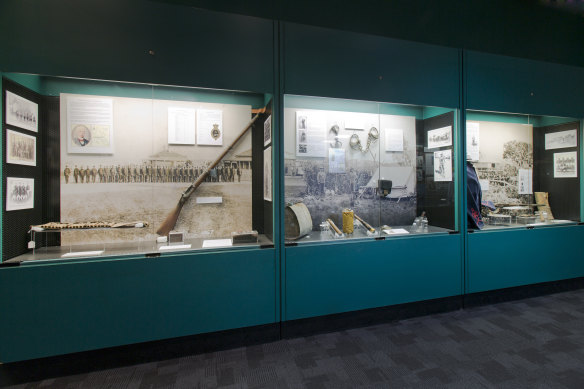
Constabulary items on show at the Queensland Police Museum in Brisbane range from the engrossing to the grisly.Credit: Queensland Police Media
Its collection fills several rooms. There are displays of weapons ranging from the Snider-Enfield Long Rifles used by Victorian-era troopers to modern handheld Glock 22 pistols, along with uniforms, vehicles and, chillingly, a petrol drum used in the horrendous 1973 Whiskey Au Go Go firebombing.
The museum is one of several in Brisbane that fly under the radar but add to the richness of the city’s cultural life – see below for a list of some of the best small and secret museums worth visiting.
Best little and secret museums to explore in Brisbane
Queensland Police Museum
Fans of true-crime podcasts, stop what you’re doing and get down to the Queensland Police Headquarters.
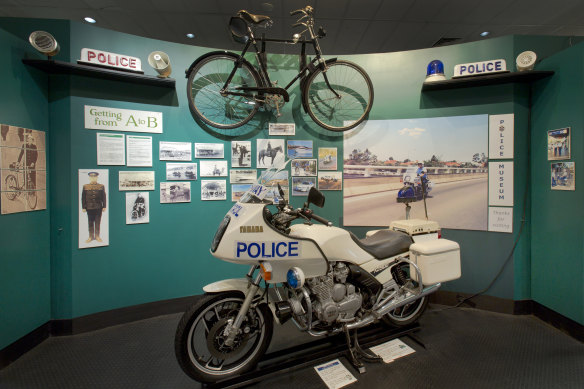
Rev-olution: Police on highway patrol in Queensland used to saddle up on a different set of wheels.Credit: Sally Jelbert
The museum is a vivid record of policing in the state since 1864 and features evidence, uniforms, medals, weapons, two-way radios, vehicles and accounts of notable crimes, solved and unsolved. If you’ve ever wanted to sit on a highway patrol chopper, you’re in luck. Check the website for details of monthly Sunday lectures, often given by retired officers involved in solving cases.
200 Roma Street, Brisbane.
Mon-Thu 9am-4pm and last Sun of month 10am-3pm (Feb-Nov), free.
MacArthur Museum
This museum occupies the same offices used as HQ by US General Douglas MacArthur, Supreme Commander of Allied forces in the South West Pacific Area during World War II.
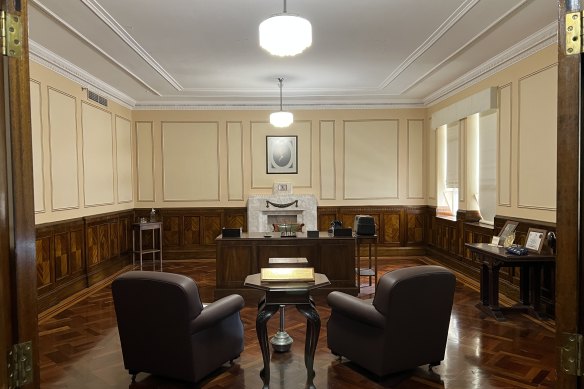
Step in the office used by US General Douglas MacArthur at the MacArthur Museum.Credit: Nick Dent
Exhibits cover MacArthur the man, the Pacific Campaign, and most pertinently, how life changed in Brisbane due to the threat of Japanese attack and the influx of thousands of American servicemen. MacArthur’s office has been furnished exactly as it was in 1943. Artefacts include a propaganda matchbox distributed in the Philippines emblazoned with the general’s famous promise “I shall return”. A Red Cross flag signed by dozens of Australian servicemen is perhaps the most vividly human war relic on display at this top-notch war museum.
Level 8 MacArthur Chambers, 201 Edward Street, Brisbane.
Tue, Thu and Sun 10am-3pm, $5-$10.
Anzac Square and Memorial Galleries
Operated by the State Library, the State War Memorial has three exhibition galleries commemorating service men and women.
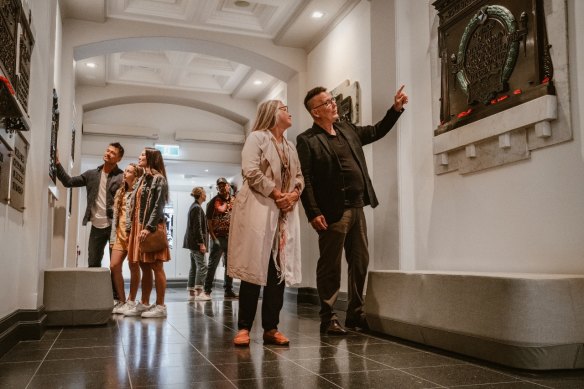
The Anzac Square Memorial Galleries has exhibits marking Queenslanders’ involvement across several wars.Credit: Simon Langford
The WWI Memorial Crypt is a sombre corridor of plaques dedicated to various regiments making up the 10,000 Queenslanders who lost their lives in the Great War. The World War II gallery lets you follow the progress of the War in the Pacific by tapping on an interactive map of the world. On special occasions you can also see the amazing 1962 wall-sized Venetian glass mosaic by Don Ross. And the Post-1945 room has screens telling the story of Australians in global peacekeeping missions and other active service situations. Don’t forget to check out the statues around the square and the Shrine of Remembrance with its eternal flame, burning since 1930.
285 Ann Street, Brisbane.
Sun-Fri 10am-4pm, free.
Marks-Hirschfeld Museum of Medical History
Satisfy your morbid curiosity (and give thanks for modern medical technology) at the Marks-Hirschfeld Museum, with such exhibits as 19th century enema kits, the dreaded “tonsil guillotine” (exactly what it sounds like), amputation saws and antique devices for blood letting.
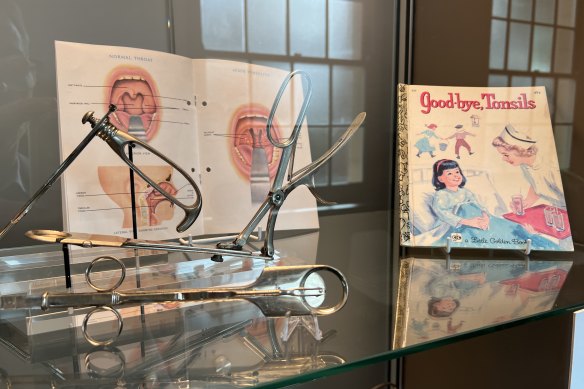
Open wide! Medical implements at the Marks-Hirschfeld Museum of Medical History throw light on a different medical age.Credit: Nick Dent
The museum is installed in display cabinets on three levels of the beautiful UQ Mayne Medical Building, built in 1938-39. Alongside “snake oil” medicines promoted by charlatans, an embalming pump and some nasty-looking pairs of forceps, you’ll also find medical breakthroughs such as the first purpose-built X-ray apparatus in Queensland (1896).
Mayne Medical Building, University of Queensland, 288 Herston Road, Herston.
Daily 8.30am-4.30pm, free.
Commissariat Store Museum
At North Quay, metres away from the futuristic development of Queens Wharf Tower, lies the oldest occupied building in Queensland.
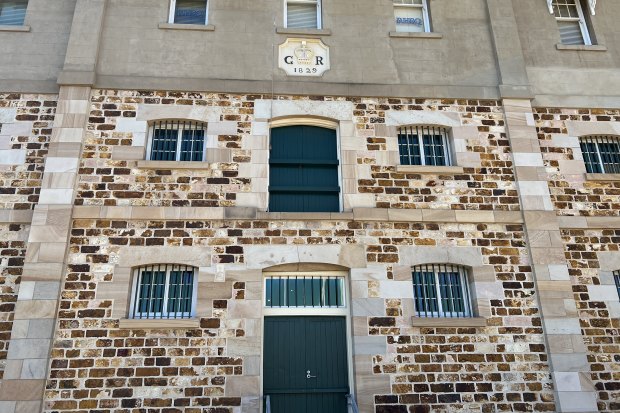
The Commissariat Store was built in 1829 to house provisions for the then-new penal colony of Brisbane.Credit: Nick Dent
And with its iron-stained, rough-hewn tuff blocks and hand-forged iron bars, it looks it. The Commissariat Store was built in 1829 to house and distribute provisions to the new penal colony of Brisbane. It’s now a three-level museum and home to the Royal Historical Society of Queensland. Displays detail the birth of the colony and convict hardship, and there are numerous relics and maritime objects. Scale models depict the Moreton Bay Penal Colony around 1837.
115 William Street, Brisbane. Tue-Fri 10am-4pm (except public holidays), $5-$10.
Old Government House
The building itself is the main exhibit here, and it’s breathtaking. Erected in 1862 in the Greek revival style to house Queensland’s first governor, Sir George Bowen, it remained the seat of power until 1910, when it became the first campus of the University of Queensland.
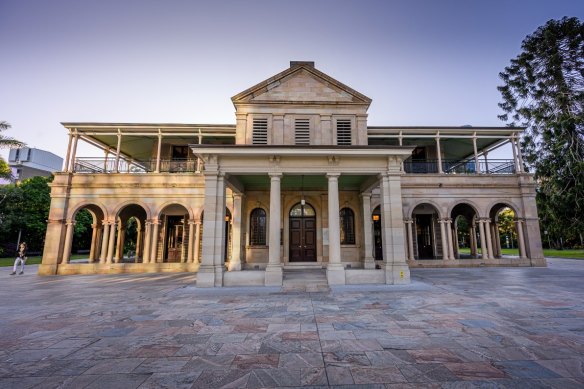
Old Government House boasted flushing toilets 100 years before the rest of the city.Credit: Sonja de Sterke
These days it’s part of a different uni – QUT – and open to visitors five days a week. Grand official rooms and high ceilings impress but, ironically, it’s the loos that are most fascinating – the house boasted flushing toilets 100 years before the rest of the city. Upstairs is given over to the William Robinson Gallery with exhibitions of the Brisbane-born artist’s work, and the stately courtyard cafe hosts High Tea once a month.
2 George Street, Brisbane.
Tue-Fri 10am-4pm; Sun 10am-2pm, free.
Telstra Museum (Queensland Telecommunications Museum)
Occupying a red-brick Telstra telephone exchange dating back to the 1920s, the Queensland Telecommunications Museum is a surprisingly kid-friendly display of vintage equipment staffed by former telecoms employees who really know their stuff.
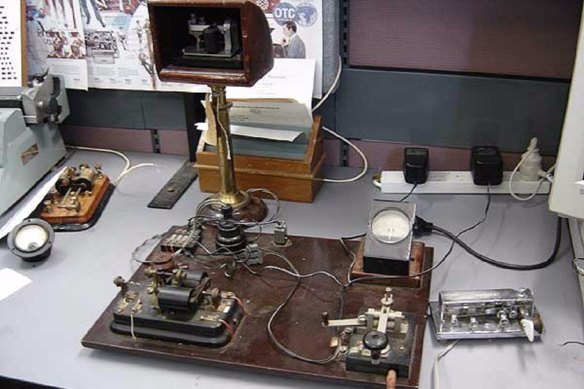
The Queensland Telecommunications Museum (Telstra Museum) at Clayfield in Brisbane.Credit: Queensland.com
Get your hands on functioning manual and automatic phone exchanges, Morse code sets, and working teletype machines. Send a telex or telegram, and make calls on vintage receivers. Among the teleprinters and phones spanning the past 150 years keep an eye out for the pedal-powered 1929 radio receiver – an Australian invention.
3 Oriel Road, Clayfield.
Wed 9am-2pm & selected Saturdays 9.30am-2.30pm, free (or $5 by appointment).
Queensland Holocaust Museum
Opened in July 2023, this important addition to Brisbane’s museum scene tells the story of the Holocaust and the more than 200 survivors who made Queensland their postwar home. Video interviews with locals like Eva and Bert Klug recount their ordeals, escapes and tales of heroism against Nazi persecution.
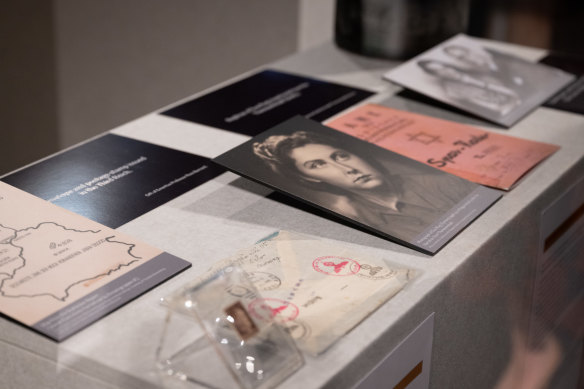
Queensland Holocaust Museum tells the stories of some of the 200 survivors who came to Queensland.Credit: Queensland Holocaust Museum
Photography and a small number of artefacts can be viewed, including a handwritten Sefer Torah scroll miraculously rescued from a European synagogue. Sorella’s Story, a powerful VR experience filmed in Latvia for the museum, makes visitors witnesses to a wartime tragedy. Living survivors of the shoah will be making occasional appearances at the museum – keep an eye on the website for these increasingly rare opportunities.
168 Charlotte Street, Brisbane.
Tue, Thu & Sun 9am-4pm, $5-$10.
Did we get it right? Did we forget something? Let us know at nick.dent@brisbanetimes.com.au.
Coming soon: Get the inside word on the news, sport, food, people and places Brisbane is talking about. Sign up for our City Talk newsletter here.